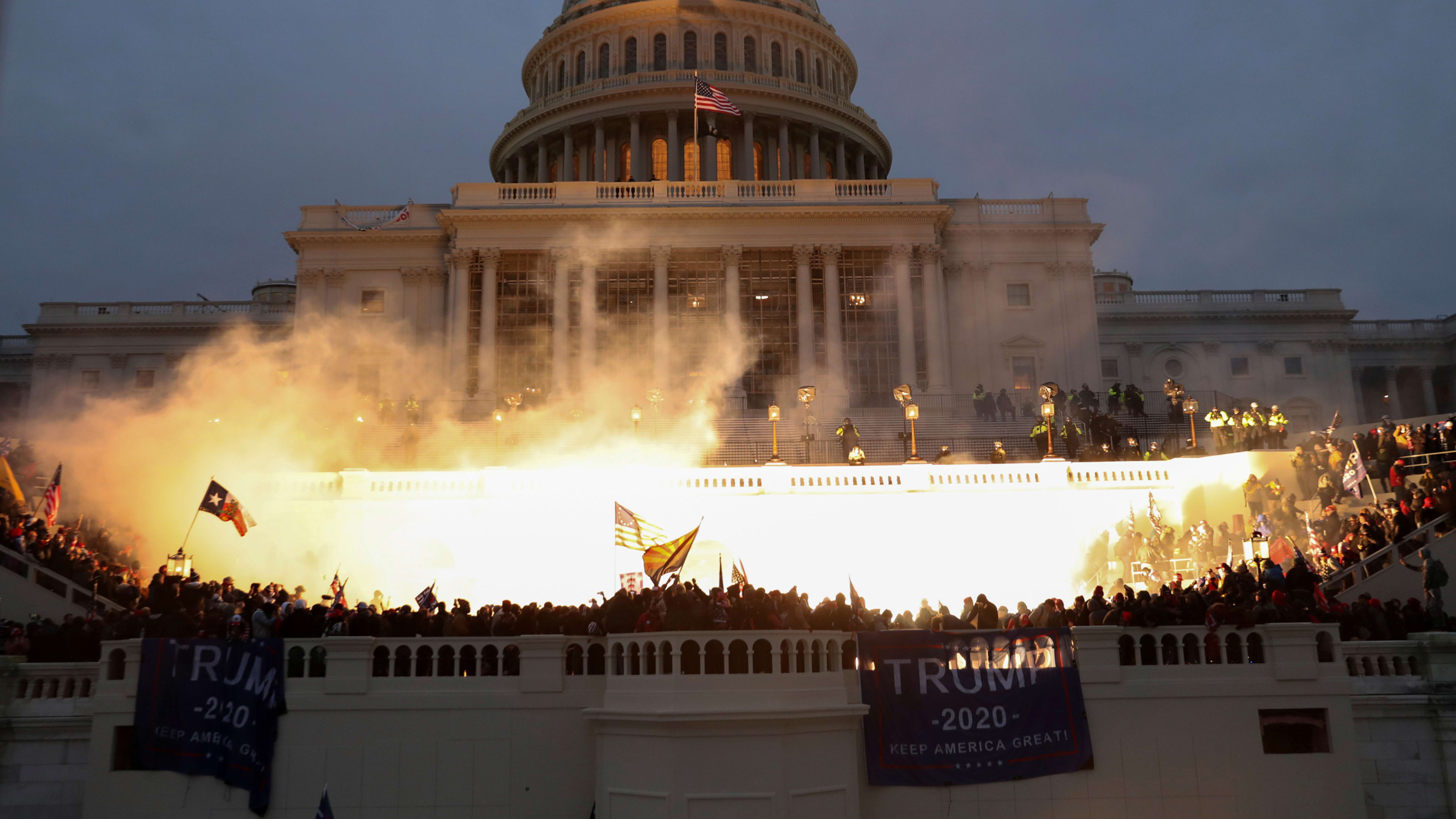Donald Trump’s presidency is in its last gasps, but photographs taken during Wednesday’s insurrection at the U.S. Capitol will remain a visceral reminder of how hard he tried to fight reality.
Leah Millis, a senior photographer for Reuters, was one of the journalists capturing events on the ground. She took over 1,000 photos that day, including a striking shot of the Capitol’s exterior. At dusk, a police flash-bang munition went off, casting a warm orange glow on the facade and silhouetting rioters with unfurled Trump flags on the platform below—the same platform used for inaugurations. At that moment, Millis clicked her shutter. How she got the shot was no easy feat.

Millis started her day at around 11 a.m. ET on the east side of the Capitol, where protesters gathered in the morning. But after receiving a message that rioters were attempting to breach the west side a few hours later, she ran to document the scene, afraid that police would block it off and she wouldn’t get access. “I saw immediately that there were hundreds, if not thousands, of people streaming up from the Mall and they were forcing their way, like they were pushing against the police,” she says.
A thin line of police was trying to hold the massive crowd. “The first thing I did was put down my bag and I took out my helmet and my gas mask and put it on,” she says. “I’ve been covering protests for a while and I knew what was going on at that point.” She spent the remainder of the day on that side of the building; had rioters breached the west side, she says she would have gone in with them.
Millis recalls hearing the crowd “chanting some kind of encouragement and realized they were probably breaking into the doors.” She climbed onto some of the scaffolding that’s set up for Inauguration Day to see what was going on. “That’s when I saw them battling with the police for an extended period of time,” she says. “It wasn’t until a different force showed up that they started firing flash-bangs and tear gas to actually disperse the crowd. And that’s what that photo is. The flash-bang going off.”
Millis and her team at Reuters do a lot of preplanning so they can be as safe as possible at rallies and protests. They all have bulletproof vests. She also has a ballistic helmet and gas mask that Millis says she’s “gotten really good at putting on and taking off really quickly.” On Wednesday, she carried two tourniquets instead of one as well as a trauma kit that’s typically used in combat zones. She says she’s also careful about what she wears—making sure to wear colorful long-sleeve shirts and avoid black so as not to be inaccurately associated with other groups. “You don’t want to draw undue attention to yourself,” she says, noting that wearing two cameras is attention enough, especially with so much anti-media sentiment out there.
The level of safety precaution has increased over a tumultuous year, but Wednesday’s events were unlike any Millis has covered before. Police didn’t make a show of force like they did at racial justice protests over the summer. (Millis covered those protests, as well as past Trump rallies.) “I’ve seen clashes with U.S. police before [but] something that struck me was these clashes were continuous and sustained,” she says. It was “full-on fighting. . . . I’ve never seen that [be] allowed to happen for as long as it did.”
As for getting the shot? “In the moment, it’s instincts,” she says. “You have experience and you try to not get hurt.” Rioters were so furiously intent on getting inside the building, Millis says they paid her little attention. No one posed. “I was kind of lucky to go under the radar.”
Recognize your brand’s excellence by applying to this year’s Brands That Matter Awards before the early-rate deadline, May 3.
